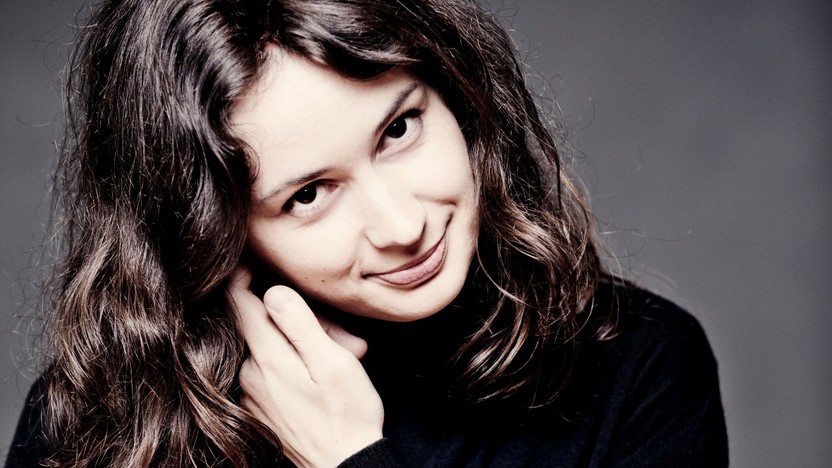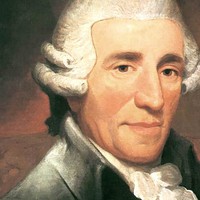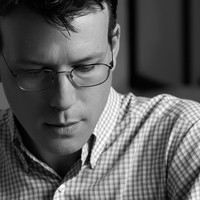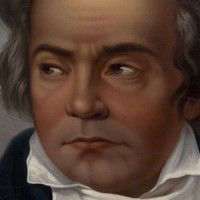Patricia Kopatchinskaja Plays Beethoven

Sponsored By
- November 7, 2015


Sponsored By

 Listen to Audio
Listen to Audio
When Prince Nikolaus Esterházy completed a lavish country palace in 1766, the workload for his tireless Kapellmeister, Joseph Haydn, increased dramatically. The “summer” seasons at the estate stretched to be nearly year-round, and all the while Haydn had to produce operas, provide music for church services, mount concerts and attend to any other musical needs for his insatiable patron. “In Eszterháza,” Haydn later acknowledged, “I was forced to become original.”
Some of Haydn’s most original efforts in the late 1760s and 1770s reflected an artistic trend that has been dubbed Sturm und Drang (“Storm and Stress”) after a play of the same name. From literature to painting to playwriting, artists dared to explore emotional extremes and dark discomfort; for Haydn, it led to his first symphonies constructed in minor keys.
The Symphony No. 49 was among Haydn’s earliest minor-key symphonies, and it is arguably his darkest. Instead of the usual order of movements, this F-minor symphony begins with a devastating Adagio in F minor, a practice in line with the older “church sonatas” that arranged the movements slow-fast-slow-fast. A rather fast second movement continues in the same key of F minor, its theme marked by aggressive leaps and driving counterpoint. The key persists for the Menuet third movement, at least until the contrasting trio section in F major provides the symphony’s only substantial relief. The brisk, throbbing finale confirms this symphony’s F-minor fate.
This symphony’s nickname, “The Passion,” did not come from Haydn, and there is no indication that the symphony had any religious connection other than a performance during Holy Week in 1790 that advertised “La passione.” Another early source labels this symphony “Il quakuo di bel’humore” (“The Waggish Quaker”), which puts a completely different sheen on this symphony’s musical mood. If accurate, it suggests that Haydn may have originally created this music for the stage, to accompany a popular satire featuring a pious Quaker character. In that version of history, Haydn’s over-the-top emotions would have played as comedy, not tragedy!
Aaron Grad ©2017
 Listen to Audio
Listen to Audio
As an expressive vehicle, I have come back to the violin more than any other instrument during my life as a composer (even though my own instrument is the piano). Along with the monodra-ma, On the Threshold of Winter, the concerto continues a series of works I've written in re-sponse to the death of a dear friend, whose passing occurred now over five years ago. While time does often heal, or at least calm the immediacy of grief's presence, it has not in this case. If anything, with the passage of time I miss her more, and the sensation of a void remains acute. While composing the concerto I thought often of a bronze sculpture by the Pennsylvania sculptor Christopher Cairns, which he calls Stanchion. In addition to the sculpted figure, fragments from Thomas Hardy's poems A Commonplace Day and The Church and the Wedding provided inspiration:
The day is turning ghost ...
I part the fire-gnawed logs,
Rake forth the embers, spoil the busy flames, and lay the ends Upon the shining dogs;
Further and further from the nooks the twilights's stride extends, And beamless black impends ...
....
And when the nights moan like the wailings Of souls sore-tried,
The folk say who pass the church-palings They hear inside
Strange sounds of anger and sadness That cut the heart's core,
And shaken words bitter to madness; And then no more.
-Thomas Hardy
Michael Hersch ©2015
 Listen to Audio
Listen to Audio
For musicians in Ludwig van Beethoven’s Vienna, one of the more effective ways to make a living was to produce concerts for their own benefit. Wolfgang Amadeus Mozart had specialized in those during his peak Viennese years (often debuting his new piano concertos there), and Beethoven followed suit, even after his encroaching deafness began to interfere with his performing career. When Beethoven’s friend Franz Clement asked for a concerto to play on his own benefit concert, the composer felt obliged to come through for the violinist who had introduced Beethoven’s Third Symphony on an earlier benefit concert, and who had been instrumental in getting the opera Fidelio produced.
Beethoven threw together an entire Violin Concerto with uncharacteristic speed, cutting it so close that the soloist supposedly had to sight-read the highly challenging part. Perhaps it was that lack of preparation time that left the public unmoved, sending the concerto into a dormant state. It didn’t catch on until Felix Mendelssohn brought the concerto back to life in an astonishing collaboration with a 12-year-old wunderkind, the violinist Joseph Joachim.
The Violin Concerto starts with a quintessential Beethoven theme: a single note, D, struck five consecutive times by the timpanist. This modest tapping motive proves to be the backbone of the substantial first movement, an outcome typical of Beethoven’s “middle period,” when he mastered the art of distilling musical ingredients down to their purest essence. One exceptionally refined moment comes just after the first movement cadenza, when the violin offers a guileless melody over a naked accompaniment of plucked strings.
The slow movement continues the rarified mood with a stately theme and variations accompanied only by the lower winds and muted strings. The Rondo finale, reached without pause through a solo cadenza, supplies the concerto with a more extroverted conclusion. Taking a page from Franz Joseph Haydn, who loved to introduce a theme softly and then hammer it hard the second time, Beethoven goes a step farther by delaying the impact until after two melodic cycles, the second voiced even more delicately than the first.
Aaron Grad ©2024
Learn more about Patricia Kopatchinskaja's unique interpretation of Beethoven's Violin Concerto through this insightful essay by the musician herself.
Music in the Making with Michael Hersch and Patricia Kopatchinskaja
Wednesday | Nov 4 | 7:00pm
UBS Forum, Saint Paul
Michael Hersch and Patricia Kopatchinskaja kick off the first Music in the Making conversation of the 2015.16 season in anticipation of the premiere of Hersch’s Violin Concerto, commissioned by and for the SPCO and Kopatchinskaja. Hersch, as a leading composer of his generation and an accomplished concert pianist, and the vibrant and compelling Kopatchinskaja, a familiar face to SPCO followers, are sure to challenge and inspire both the musicians and audience of the SPCO. In this intimate and open conversation Hersch and Kopatchinskaja detail the making of the four movement work and on elaborate their collaborative and creative processes.
Get driving directions and find nearby parking.
Find dining options close to the venue.
View seating charts to find out where you'll be seating.
SPCO concerts are made possible by audience contributions.
For exclusive discounts, behind-the-scenes info, and more:
Sign up for our email club!
